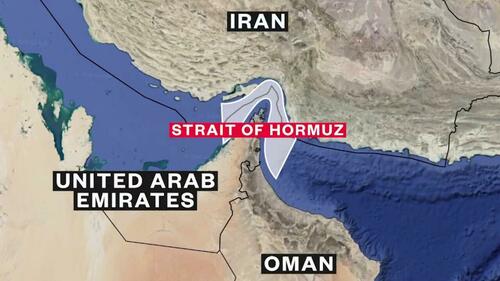
By Tsvetana Paraskova of OilPrice.com
The oil market is on edge over the escalation of geopolitical risk in the Middle East after this weekend’s attack by Hamas on Israel, with uncertainties about how events will unfold or how far the conflict could spread, the International Energy Agency (IEA) said on Thursday.
“A sharp escalation in geopolitical risk in the Middle East, a region accounting for more than one-third of the world’s seaborne oil trade, has markets on edge,” the IEA said in its closely-watched Oil Market Report for October published today.
Oil prices surged on Monday after the weekend attack by Hamas on Israel rekindled tensions in the Middle East and the war premium in the market returned.
“While there has been no direct impact on physical supply, markets will remain on tenterhooks as the crisis unfolds,” the IEA said in the report.
Amid many uncertainties in the conflict, and “Against a backdrop of tightly balanced oil markets anticipated by the IEA for some time, the international community will remain laser-focused on risks to the region’s oil flows,” the Paris-based international agency said.
While warning that the heightened tensions in the Middle East could pose risks to the oil market, the IEA raised slightly its 2023 oil demand growth estimate to 2.3 million barrels per day (bpd), up from 2.2 million bpd growth expected in the September report.
However, the agency lowered its demand growth estimate for 2024 by around 100,000 bpd, due to expectations of slowing economies and energy efficiency weighing on oil consumption. The IEA sees next year’s oil demand growth at 900,000 bpd now, down from the 990,000 bpd increase expected in last month’s report.
“Global oil demand growth is set to slow to 900 kb/d in 2024 as the post-Covid rebound runs out of steam while the economic expansion slows and energy efficiency improvements weigh on oil use,” the IEA said.
By Tsvetana Paraskova of OilPrice.com
The oil market is on edge over the escalation of geopolitical risk in the Middle East after this weekend’s attack by Hamas on Israel, with uncertainties about how events will unfold or how far the conflict could spread, the International Energy Agency (IEA) said on Thursday.
“A sharp escalation in geopolitical risk in the Middle East, a region accounting for more than one-third of the world’s seaborne oil trade, has markets on edge,” the IEA said in its closely-watched Oil Market Report for October published today.
Oil prices surged on Monday after the weekend attack by Hamas on Israel rekindled tensions in the Middle East and the war premium in the market returned.
“While there has been no direct impact on physical supply, markets will remain on tenterhooks as the crisis unfolds,” the IEA said in the report.
Amid many uncertainties in the conflict, and “Against a backdrop of tightly balanced oil markets anticipated by the IEA for some time, the international community will remain laser-focused on risks to the region’s oil flows,” the Paris-based international agency said.
While warning that the heightened tensions in the Middle East could pose risks to the oil market, the IEA raised slightly its 2023 oil demand growth estimate to 2.3 million barrels per day (bpd), up from 2.2 million bpd growth expected in the September report.
However, the agency lowered its demand growth estimate for 2024 by around 100,000 bpd, due to expectations of slowing economies and energy efficiency weighing on oil consumption. The IEA sees next year’s oil demand growth at 900,000 bpd now, down from the 990,000 bpd increase expected in last month’s report.
“Global oil demand growth is set to slow to 900 kb/d in 2024 as the post-Covid rebound runs out of steam while the economic expansion slows and energy efficiency improvements weigh on oil use,” the IEA said.
Loading…





